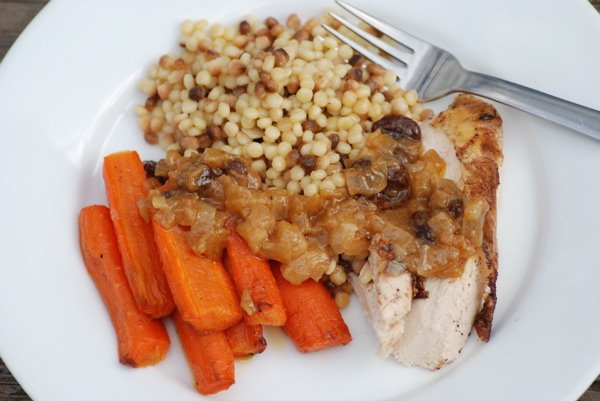Cinnamon has been an important spice since antiquity. Its origins were kept secret from Europeans by the Arab traders from whom they purchased this useful and expensive spice. Cinnamon was thought to have curative powers, was commonly given as gifts to royalty, and was burned in Roman funeral pyres. To these Europeans, it made sense that it should be such a pricey item, seeing as the Cinnamon birds first had to harvest it in order to construct their nests, and then particularly daring humans had to fake out the birds in order harvest the spice from those nests before it could even begin its journey along the Spice Road. Or so the Europeans were told.
Eventually, Europeans learned that cinnamon is actually the bark of a small evergreen tree that is indigenous to Sri Lanka, which, during colonial times, was known as Ceylon. Both the Portuguese and Dutch colonized Sri Lanka early on – separately, of course – and the Dutch created a monopoly on the export of Ceylon cinnamon. By the time the British took control of Ceylon from the Dutch in 1796, Ceylon cinnamon had competition from its relative, Cassia, which is what we in the United States most often find in our grocery stores. No Cinnamon birds or daring bird tricksters required.
I’ve never tried Sri Lankan, or “true”, cinnamon myself, but I sure do love me some Cassia, which is often sold as Vietnamese cinnamon, Chinese cinnamon, or Indonesian cinnamon. I’ve been using Vietnamese cinnamon in my baking as that is the type that is readily available in the grocery store I frequent. You might recall that I have a bit of an apple-cinnamon obsession, so I do use a fair amount of cinnamon in my house, but nearly always relegate it to sweet dishes, not savory. That has all changed, now, people.
Many cultures use cinnamon in their savory dishes, but, as I am ever-so-slightly obsessed with the Italian culinary lexicon, and – while my knowledge of Italian cuisine is certainly far from encyclopedic – I don’t know of any Italian dishes that feature cinnamon. But I was thinking about cinnamon in a savory context, and realized that cinnamon would pair nicely with chicken – and pork as well – hence, I came up with this concoction. Not only was it scrumptious, but it also fills the house with the wonderful aroma of cinnamon – or Cassia if we’re being particular.
Ingredients
- 1 whole chicken, 3-4 pounds
- salt
- black pepper
- 1 teaspoon cinnamon
- 2-3 tablespoons olive oil
- 1/2 medium onion, chopped
- 1 cup orange juice (you could also substitute apple cider in place of the o.j.)
- 1 teaspoon cinnamon
- 1/4 cup raisins
- salt
- pepper
Instructions
- Set an oven rack in the middle position. Preheat the oven to 400 degrees.
- Rinse the chicken and pat dry. Place the chicken breast-side up in a roasting pan or lasagna pan. Salt and pepper the bird, and then rub the cinnamon all over the skin. If you are looking at your teaspoon full of Vietnamese, Chinese, or Indonesian cinnamon and considering how ever you will rub it on the chicken skin, I can assure you it will be easier if you place it in a bowl first and pinch out what you need as you go.
- Once the oven is preheated, place the chicken into the oven with the legs facing the back wall and the breast facing the oven door. Roast for one hour, or until skin is crisp and when the bird is pierced, clear liquid runs from it. If you're a bit concerned about your threshold for cinnamon enjoyment as it applies to the bird itself, you can omit the cinnamon, but still roast the bird at 400 for an hour. However, the cinnamon permeates the meat as it cooks and really does elevate the dish. In any case, once the Cinnamon bird is done cooking, remove it from the oven and allow it to stand for five minutes prior to carving.
- Approximately 20 minutes before the bird is scheduled to come out of the oven, heat the olive oil in a large saute or fry pan over medium heat. Add the chopped onion, and saute until translucent, approximately 2 to 3 minutes. Add the orange juice, cinnamon, and raisins, stir to combine, and then simmer gently until the liquid is reduced by half, approximately 10 minutes. Salt and pepper to taste.
- Serve the chicken with a spoonful or two of the Orange-cinnamon sauce, ideally with a grain such as Sardinian Fregola, which I recommend seeking out in your local Italian market as I have purchased it for $3.59 for a 1.1 pound bag at mine, or Israeli cous-cous, or perhaps a sweet potato, and some roasted carrots or sauteed kale and sit back as the Cinnamon bird transports your family's dinner routine to new heights.
If you happen to be the homemade-chicken stock type, you can also salvage the chicken carcass and freeze it in a freezer bag or container until you’re ready to make your next batch of chicken stock. It certainly does make the best use of the whole bird, that is for certain.
Dinner tonight: Roasted Chicken Legs with Olives, Crispy Kale, and Polenta. Estimated cost for two: $6.39. The chicken legs were $3.62 for 3. JR will eat one, I will eat one, and one will go to work with JR tomorrow for lunch. Presuming all were of equal size, which, of course defies all probability, but we do need a foundation for our math – they each cost $1.20 and two-thirds cents, so we’ll call the two that are for dinner $2.42 to be safe. The kale was $1.99 for the bunch, we will eat about half of that, so $1.00, rounding up. But, if I were really being a stickler, the kale was actually FREE. Whole Foods doesn’t charge you if an item rings up incorrectly. When I purchased the kale, there was a lovely sign above it in the produce section indicating that it was on sale for $1.99 – it is normally $2.49. At check-out, it rang up at $2.49. I told the cashier that the price was incorrect. He paged Evan in produce. Evan came to the register, said, “Yeah, the dinosaur kale is $1.99″. I concurred. The cashier said, “But it rang up at $2.49, so it’s free. Right?” Evan said yes. If Evan and I had our way, balloons would have dropped from the ceiling and a person in a dinosaur costume would have emerged from the hallway beyond the register to celebrate my free dinosaur kale. Alas, there were no balloons or dinosaur costumes, but there was much glee just the same. It’s amazing what the occasional free item will do for one’s mood. The olives were $5.99/pound for Castelvetrano (green) olives, and we are going to use just a couple of ounces, so that’s around 75-cents. As you may remember from the last time we had this dish, it is a riff on a roasted duck with olives that I have had at Latte di Luna in Pienza, Italy. I still haven’t seen duck on sale, or duck on offer, for that matter, so we will stick with the much more widely available chicken legs. I will use around 45-cents worth of olive oil in this dish, along with the other half of the onion that was used in the above Orange-cinnamon sauce. So the half an onion costs 25-cents, and I’ll throw approximately 10-cents worth of thyme on the chicken legs. I will use 4 cups of chicken broth at $2.19 total using the Whole Foods store brand. The polenta was $2.69 for a bag that has nineteen 1/4 cup servings, and I will use one cup total so that we have leftovers. At 14-cents per 1/4 cup, that’s just over 56-cents for one cup. I will use a tablespoon of butter to finish off the polenta, and at $2.79 for 32 tablespoons, that adds 9-cents to the tally. We will eat approximately one-half of the polenta, so half of $2.84 is $1.42. And I will look forward to leftover polenta in tomorrow’s lunch. When last we had this, I served white beans instead of polenta, and that menu adjustment would save you 43-cents if you were so inclined.


[…] recipe from the book Jenn had given me over the holidays, Poor Girl Gourmet by Amy McCoy. I chose Cinnamon Chicken with Orange-Cinnamon Sauce. It sounded exotic and kind of roadside at the same time. It smelled fantastic while it was […]